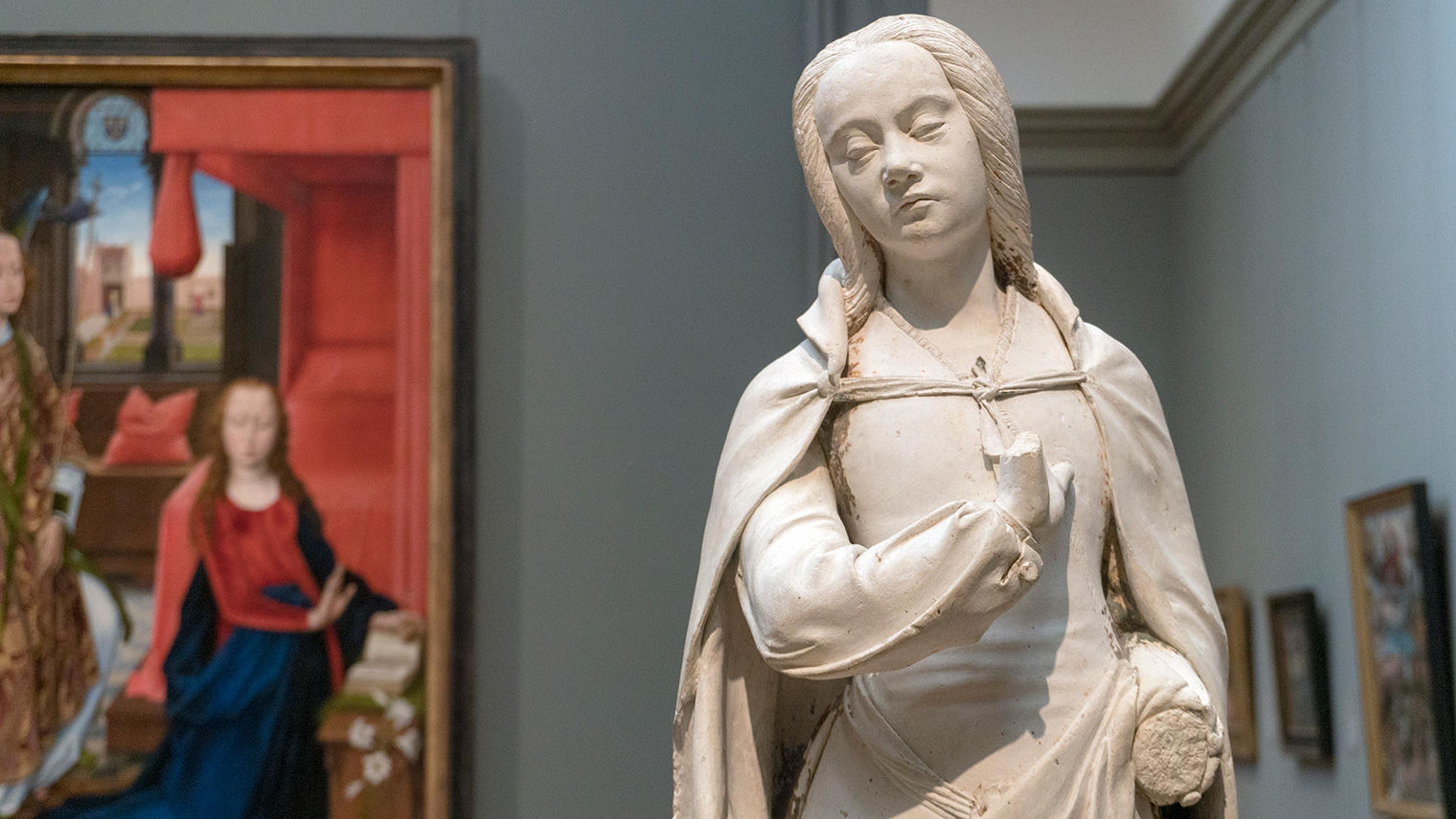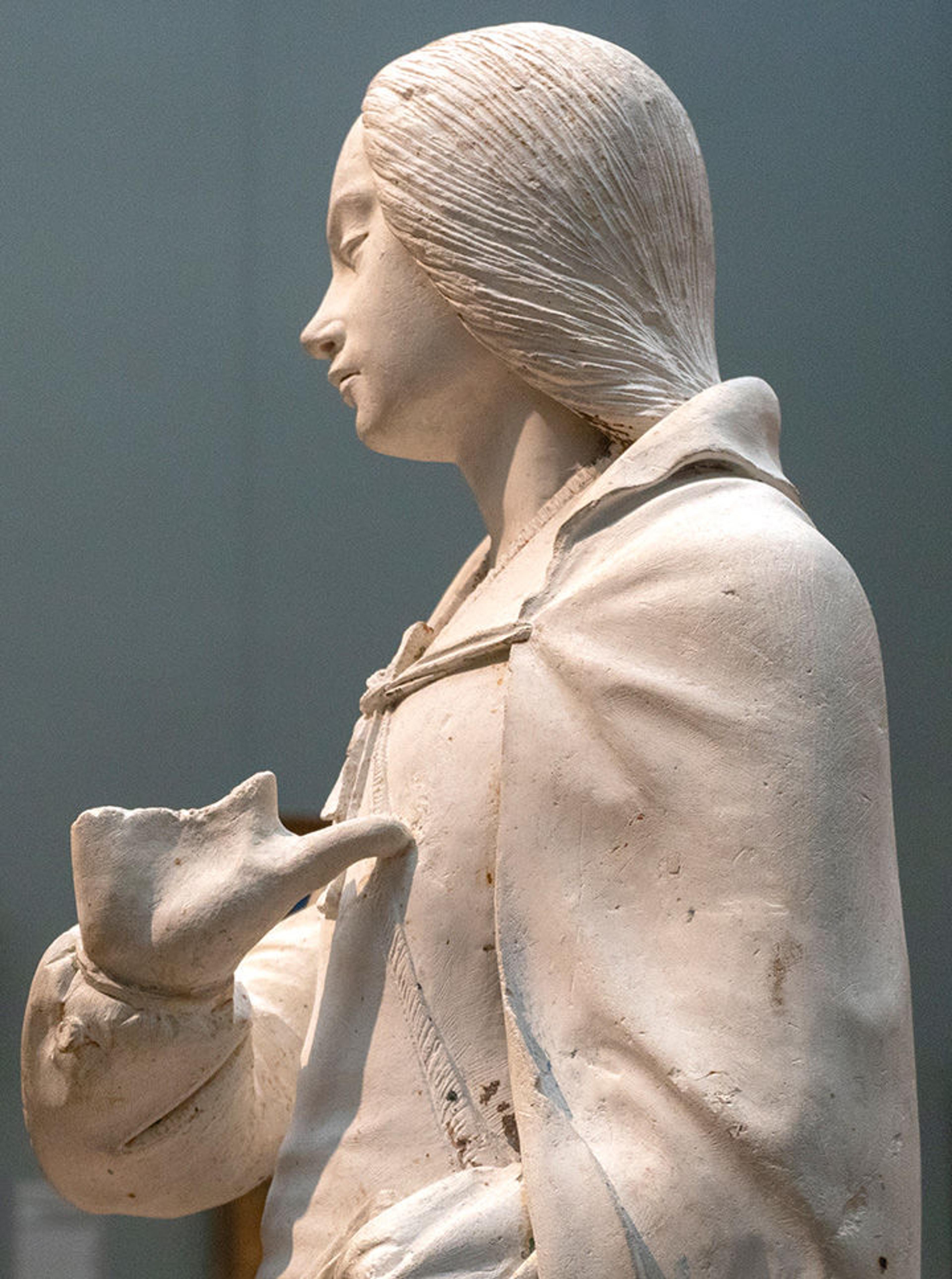
Jean Guillaumet, called Jean de Chartres (French, Bourbon, first decade of the sixteenth century). The Virgin Annunciate, ca. 1510–20. White limestone with traces of polychromy, 38 x 12 x 10 1/2 in., 112 lb. (96.5 x 30.5 x 26.7 cm, 50.8 kg). On loan from The Hearn Family Trust and Charles Hack, 2018
Just in time for the Christian observance of the Annunciation on March 25, a beautiful, serene sculpture of the Virgin Mary is on view in gallery 640 at The Met Fifth Avenue. The Virgin Annunciate was originally matched with a now-lost figure of the archangel Gabriel; together, they formed a sculptural grouping that may have been installed over the entrance of a church. In the familiar Biblical story, the archangel appeared to the Virgin Mary to announce that she would conceive and give birth to the Christ Child, the son of God (Luke 1:26). Accordingly, the Annunciation is celebrated nine months before Christmas.
The poignant expression on the Virgin's face signals the psychological complexity of her response to Gabriel's prescient words. She turns toward the speaker, but is overwhelmed with the significance of his news as she solemnly takes it in. She raises her right hand in acceptance, tenderly touching her thumb to her heart.

This is test copy to make sure I'm not losing any data.
Detail view of the sculpture, as installed in gallery 640
The Virgin, on indefinite loan since December 2018 from the Hearn Family Trust and Charles Hack, now stands between the painted Annunciations of Hans Memling and Gerard David, artists working in Bruges at the end of the fifteenth and beginning of the sixteenth century. The stylistic characteristics of the sculpture are extremely similar to figures in paintings by the Moulins artist Jean Hey (also called the Master of Moulins), who worked at the same time. In fact, the Virgin Annunciate looks like a figure from a Jean Hey painting in three dimensions.
The Virgin Annunciate is on view at The Met Fifth Avenue in gallery 640.
